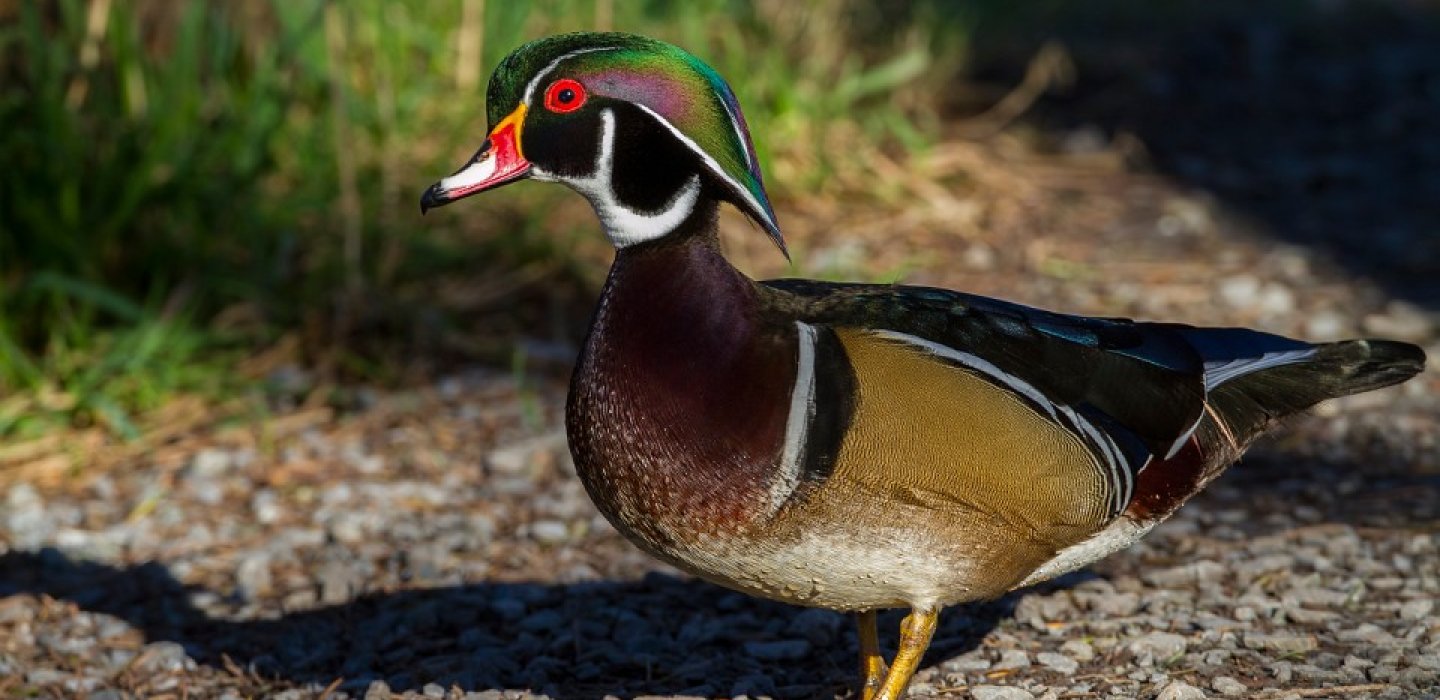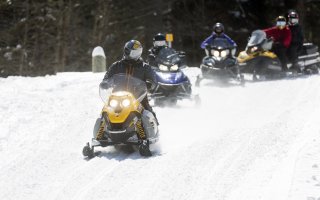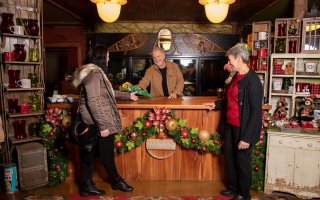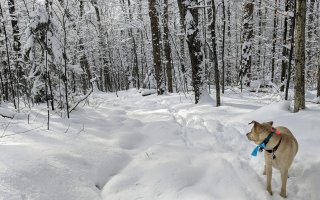
Variable Weather
Spring weather in the Adirondacks and North Country is a variable which is difficult to predict. One day offers warmth and sun and the next is cold with misty rain. So when I saw the forecast for a beautiful day followed by rain, I knew I had to jump at the opportunity. I was tired of sitting in front of my computer!
Wren - determined not to be left behind -- stayed close by my side, and we started by driving north along Route 30 toward Malone, casually searching for species of note.
We stopped near Deer River Flow for a bird which caught my eye, and I realized it was a Northern Shrike - still lingering after the winter. It flew a short distance back from the road and I stood watching it while listening to my first spring chorus of wood frogs. With the shrike too far for my camera to catch, I moved on, checking Deer River Flow itself which offered up a pair of Hooded Mergansers and a pair of Bufflehead. I heard singing ensembles of spring peepers as well.

Flooded Fields and Wetlands
I drove straight to the recreation park in Malone - I wanted to check out the Canada Geese to see if there were any odd species with them. But while there were a few hundred Canadas, there was nothing of note - just a pair of Common Mergansers to break up the honking monotony.
From there I drove through some of the farm roads west of Malone, where I was hoping to find flooded farm fields which might attract migrating waterfowl. For the most part these fields were dry and quiet, but I did add species like Wild Turkey, Savannah Sparrow, and Broad-winged Hawk to the list.
Then I headed up to the Franklin County Landfill where I got permission to drive the loop. Like the recreation park, I was interested in odd species mixed with the common birds, and I found a nice collection of Ring-billed and Herring Gulls, but nothing else, save a pair of American Kestrels. It is late in the season for odd species of gulls, anyway.

My luck turned once I began to work some of the fields near Fort Covington; the best of these along Chapman Road off of Drum Street Road. The field opposite the large, private marsh sat flooded so that it looked like a large pond and its ephemeral waters were strewn with ducks.
In fact, I counted 10 species of waterfowl - mostly dabblers - with Ring-necked Ducks as the only diving species. The highlights included 27 Northern Pintail, 18 Green-winged Teal, as well as numbers of American Wigeon, Gadwall, Wood Duck and a lone Northern Shoveler - a beautiful drake.
As I stood looking through the birds sliding through the old, broken corn stalks, I listened to my first Pine Warbler of the season and a loud choir of northern leopard frogs while a pair of Great Egrets flew overhead. I also spotted my first Barn Swallows coursing low over the water. It all offered strong evidence that spring had, in fact, arrived!

This fact was further supported by another group of ducks in the marsh along Drum Street Road - this flock including a male Blue-winged Teal. From there I took a quick spin through Robert Moses State Park where the Great Gray Owls entertained everyone all winter. But I didn't stay long - I wanted to see Wilson Hill Wildlife Management Area, a short distance west in St. Lawrence County.

Wilson Hill WMA and Robert Moses State Park
While my first stop or two at Wilson Hill were slow, the sounds of spring peepers and chorus frogs filled the air, and I eventually discovered where the ducks were congregated. There I found a similar mix as I had found near Fort Covington, but with a lot more Wood Ducks and a pair of Blue-winged Teal.
I also spotted a Eurasian Wigeon cavorting with its American comrades, an American Coot, and my first pumping American Bittern to help round out some avian nationalist pride. All told I observed better than 45 species of birds at Wilson Hill in a short period of time.
But even more exciting than that was a fisher which ambled across the road as Wren and I were getting back into the car! We both watched it appear and then vanish again almost immediately - they are just so cool!

Then it was back to Robert Moses State Park where my original plan had been to poke around in the evening for any sign of the Great Gray Owls to see if they had dawdled into April. There hadn't been any negative reports of folks trying to find them and failing. But after the diversity at Wilson Hill had delayed me, I was behind when I got to the park and darkness was already falling. So I didn't find the owls, but I didn't give it much of a shot either.
Wren and I took a walk in the dim light, finding a Great Horned Owl and 8 displaying American Woodcocks in search of some female attention - sounds like some people I know! We also paused one last time to listen to the din of spring peepers and chorus frogs declaring to all that spring had arrived.

Spring and summer offer amazing birding in the North Country! Come plan your outdoor recreation adventure today by exploring our lodging and dining options!






Comments
Add new comment